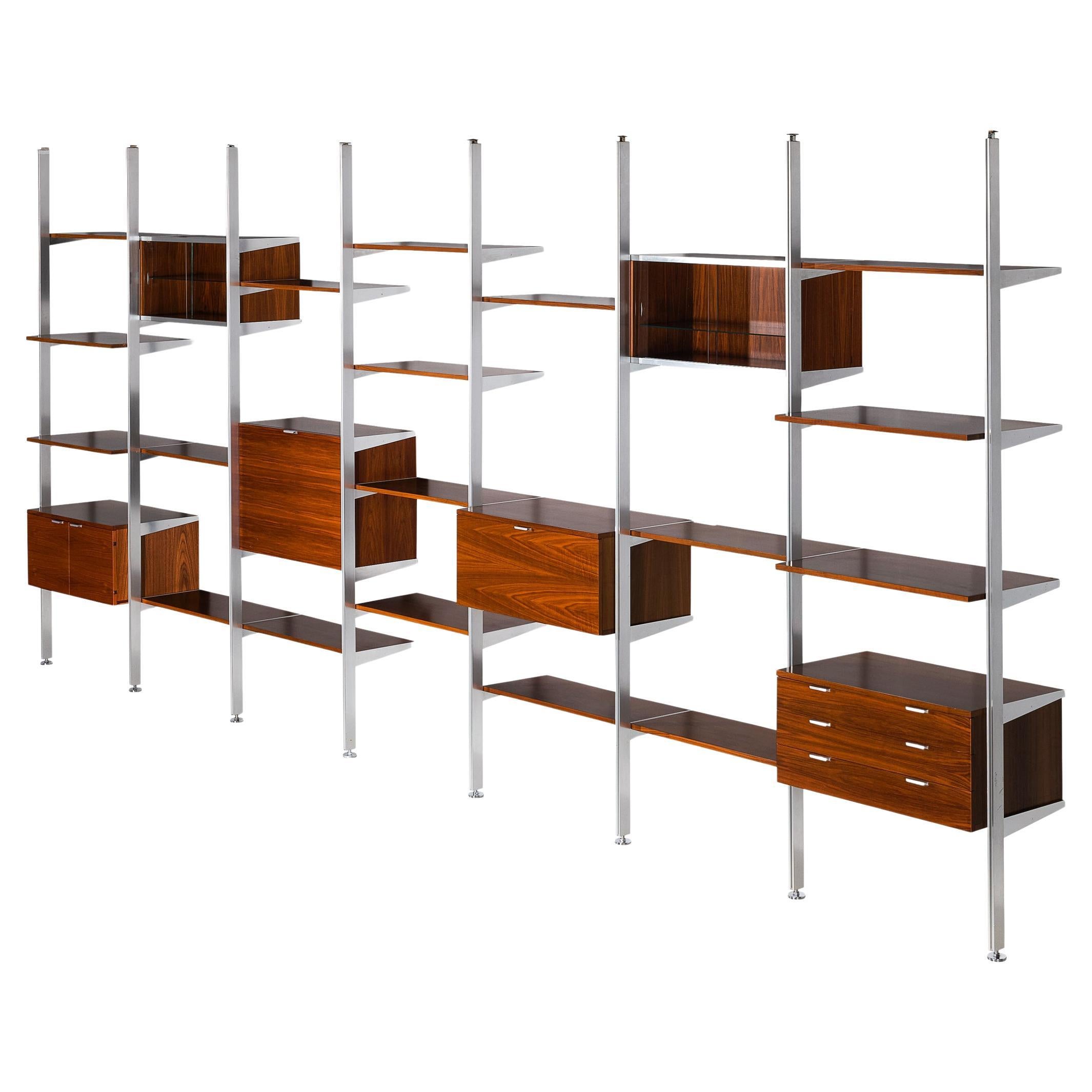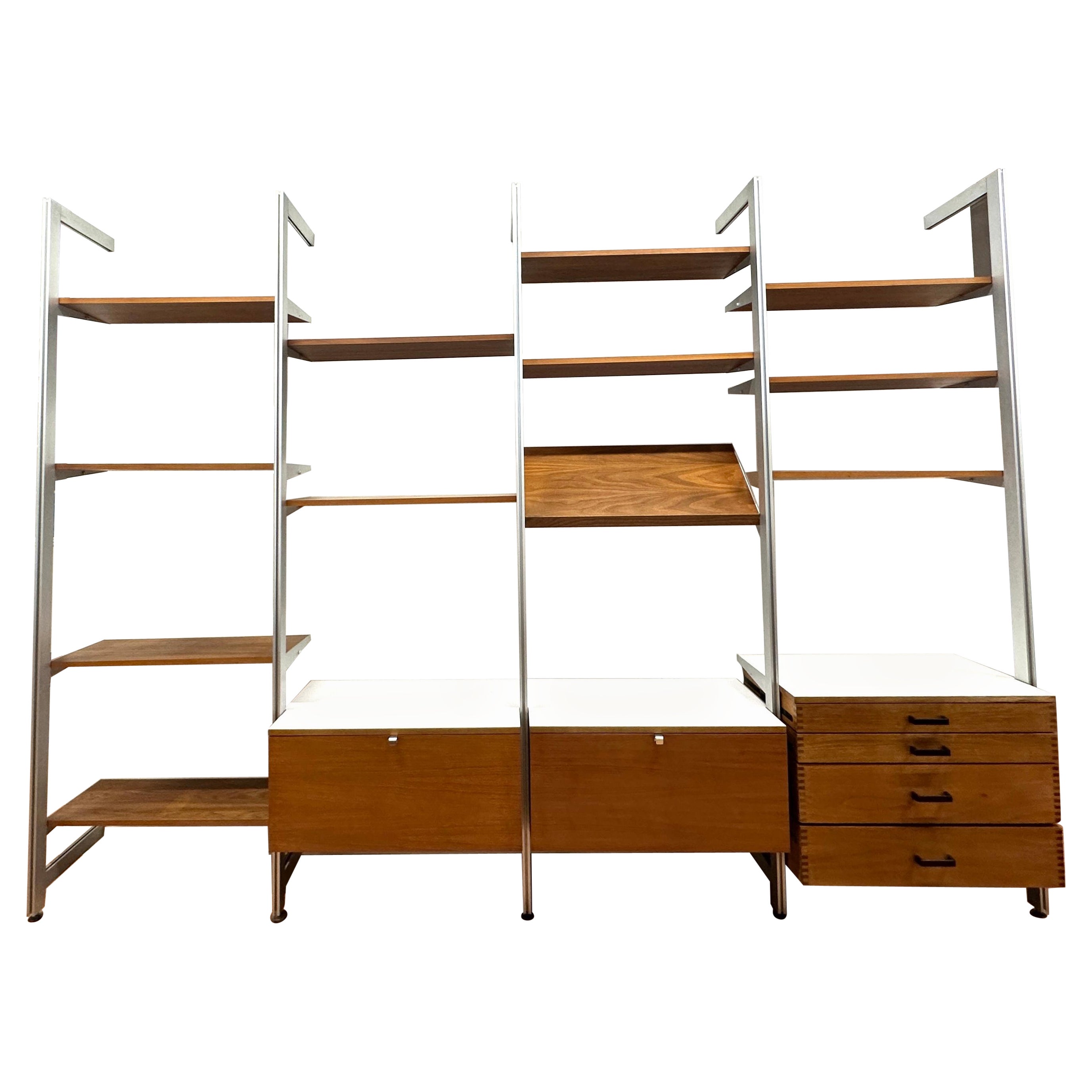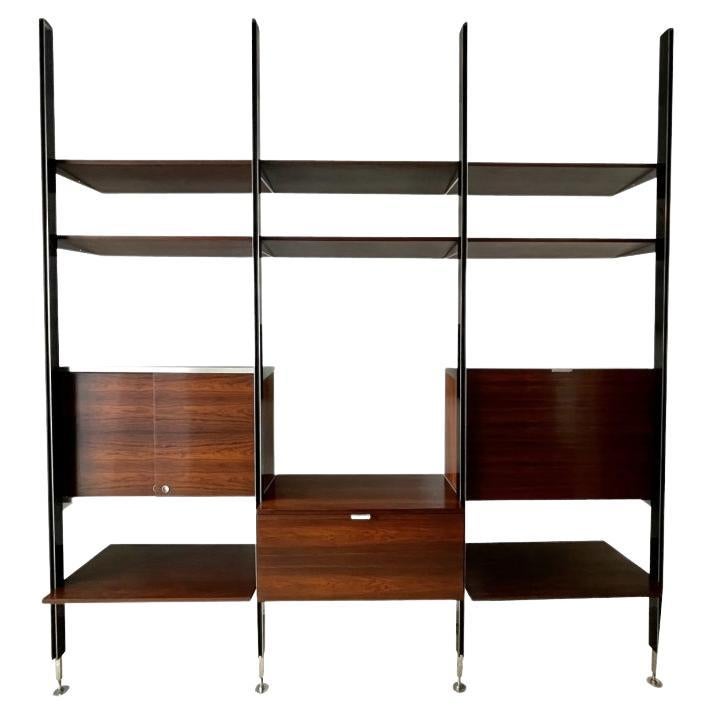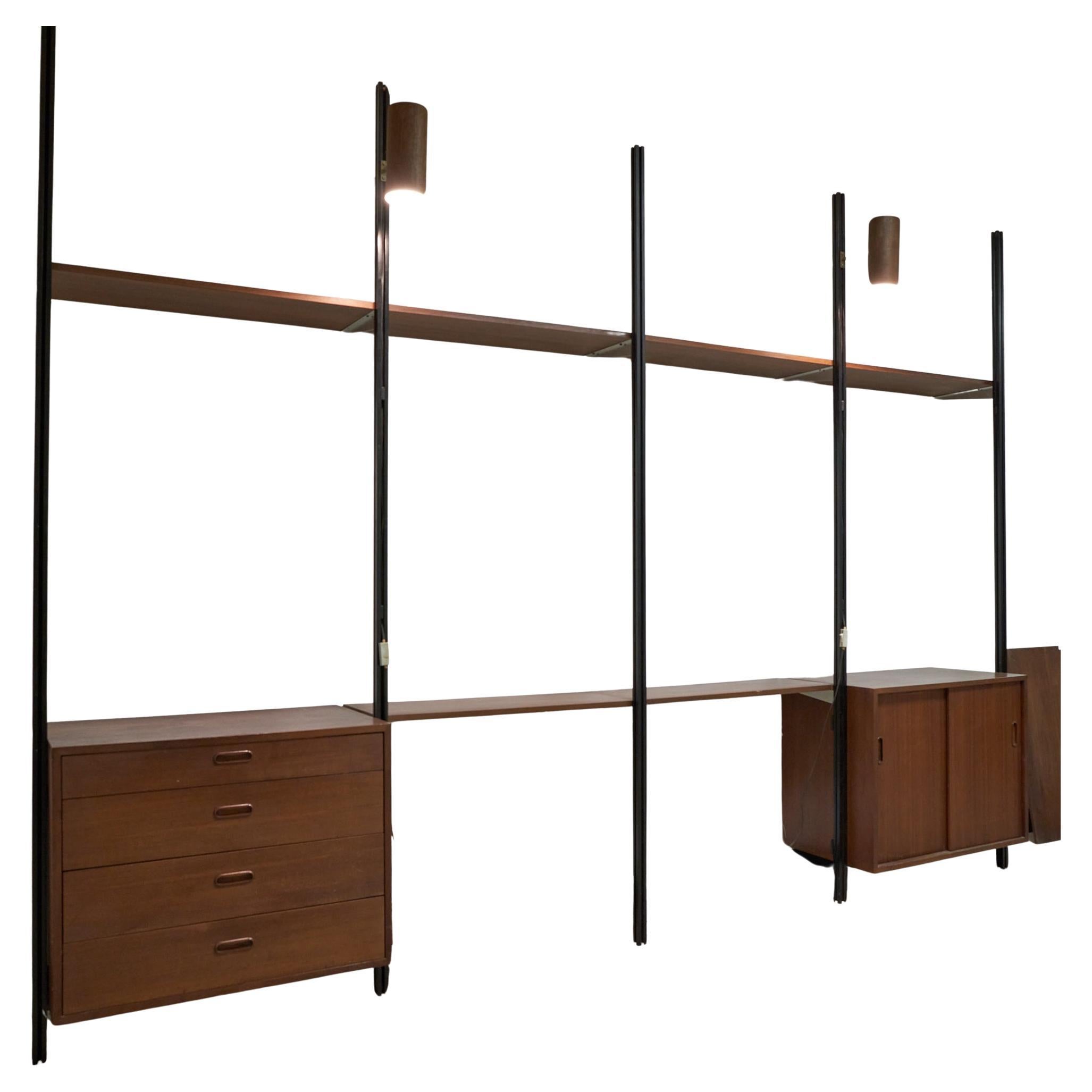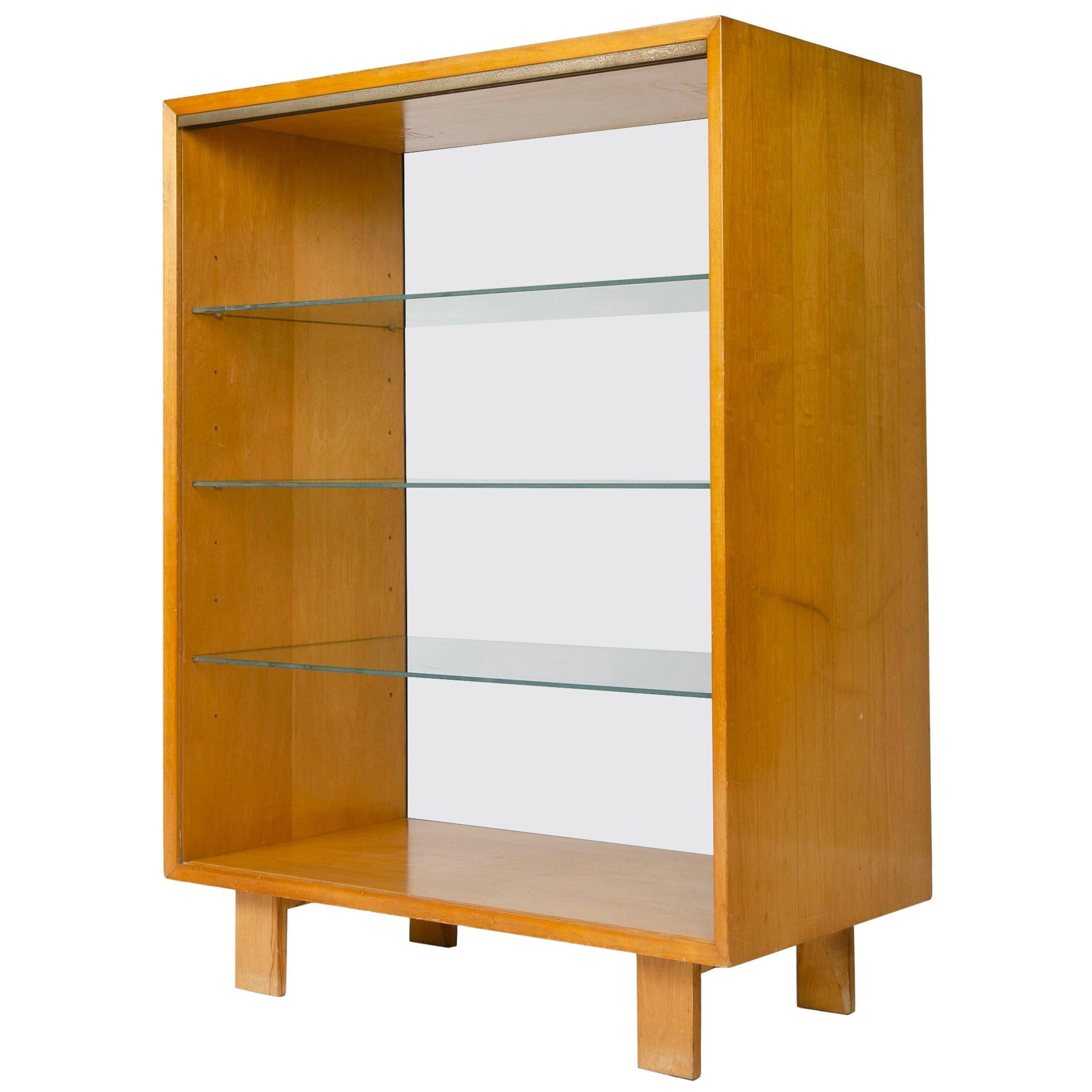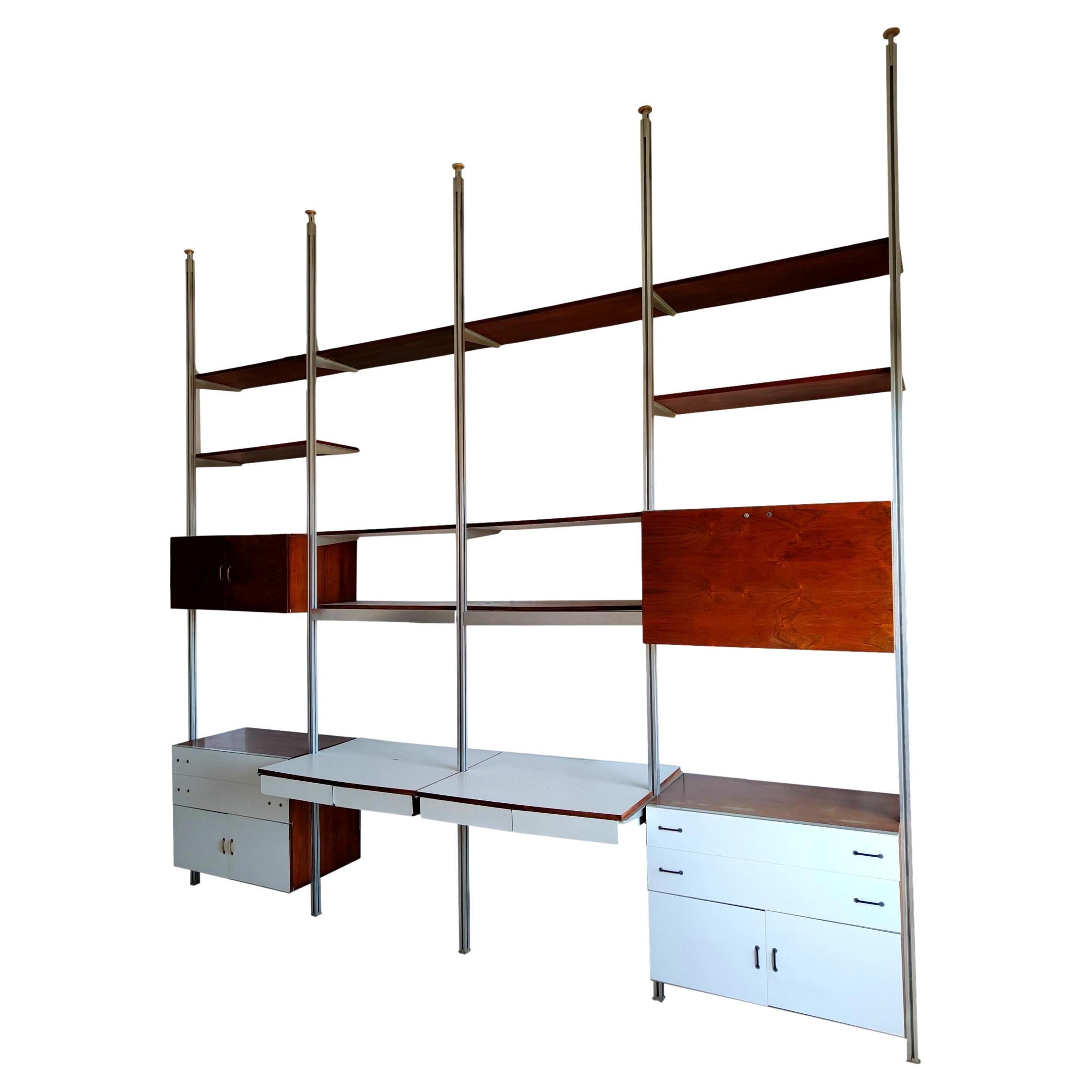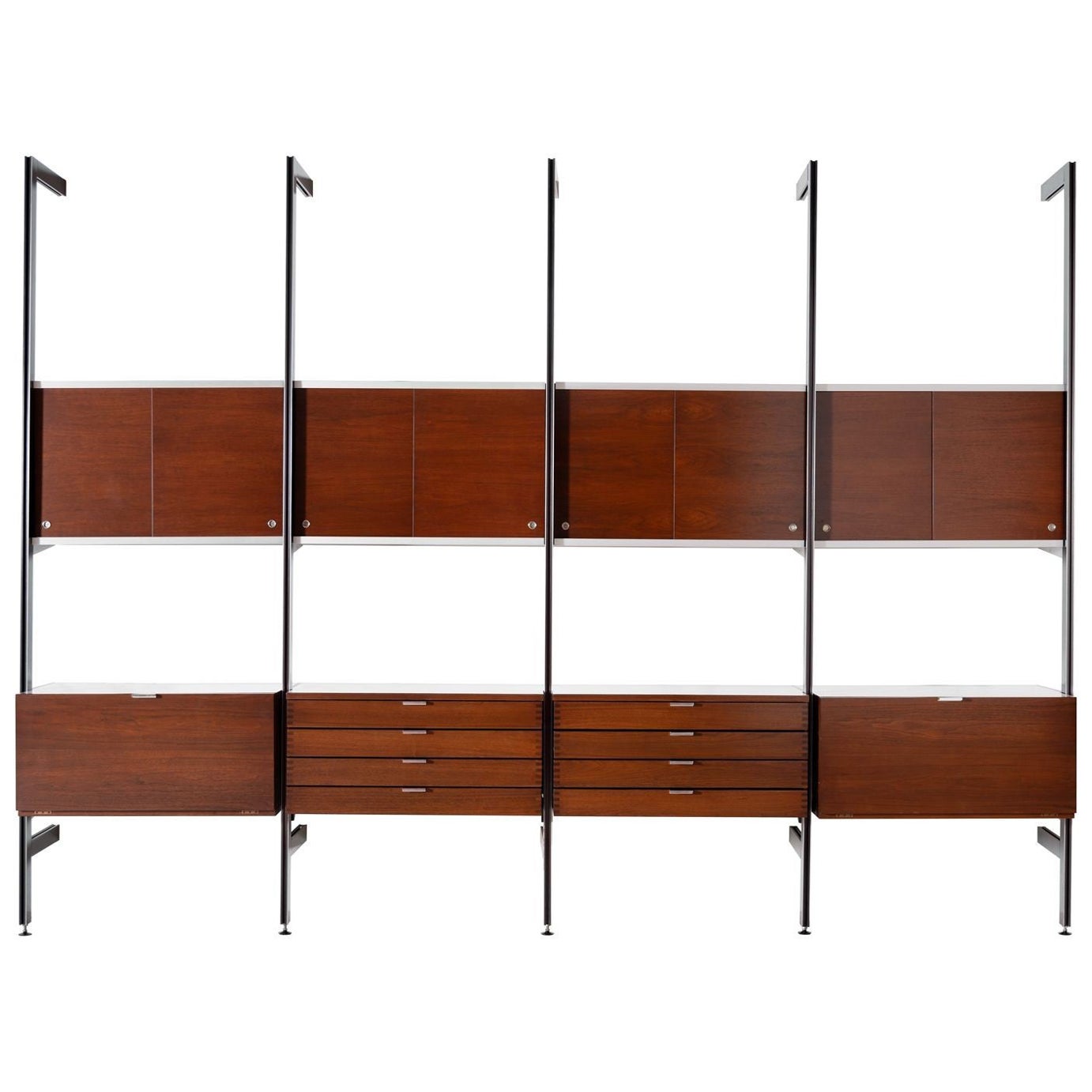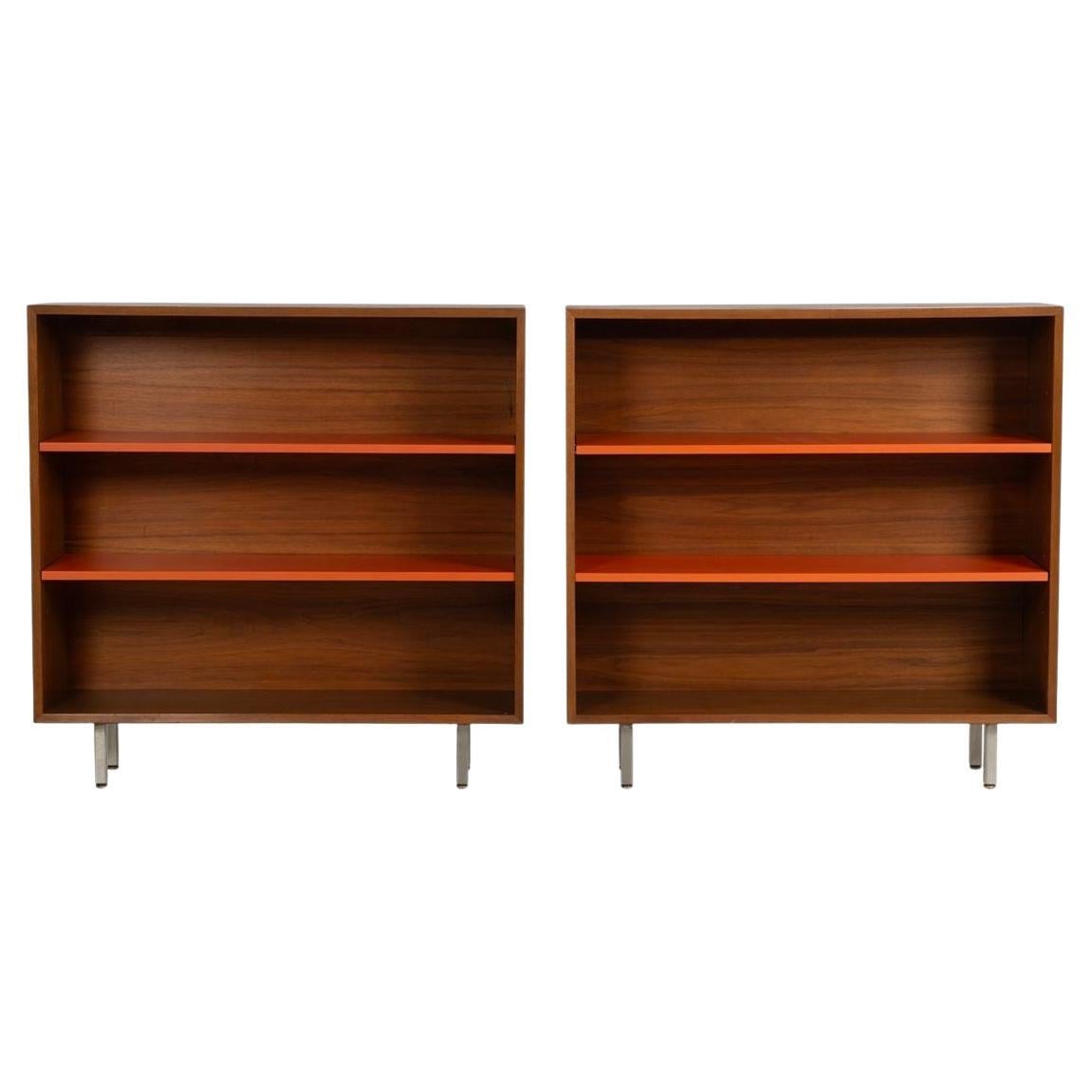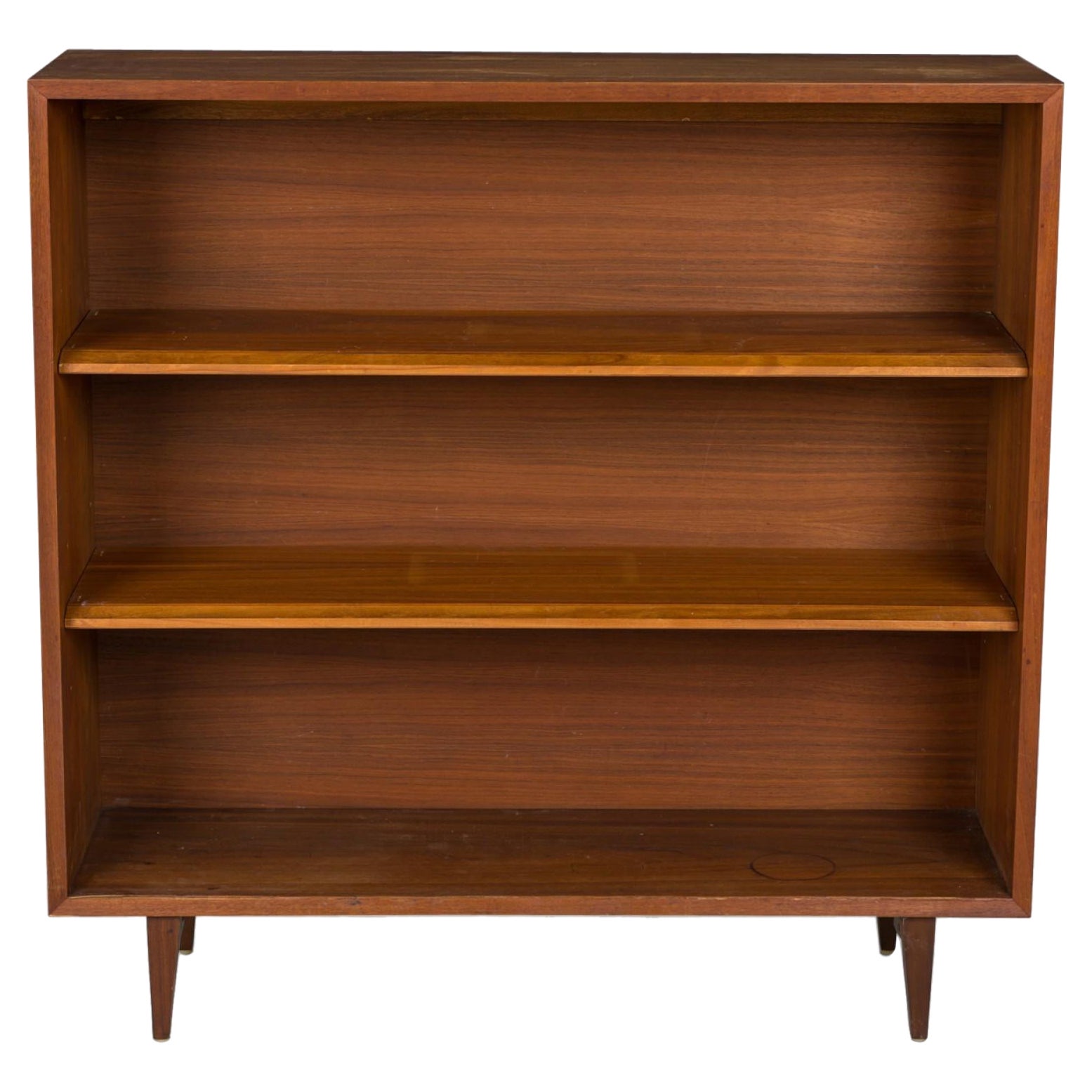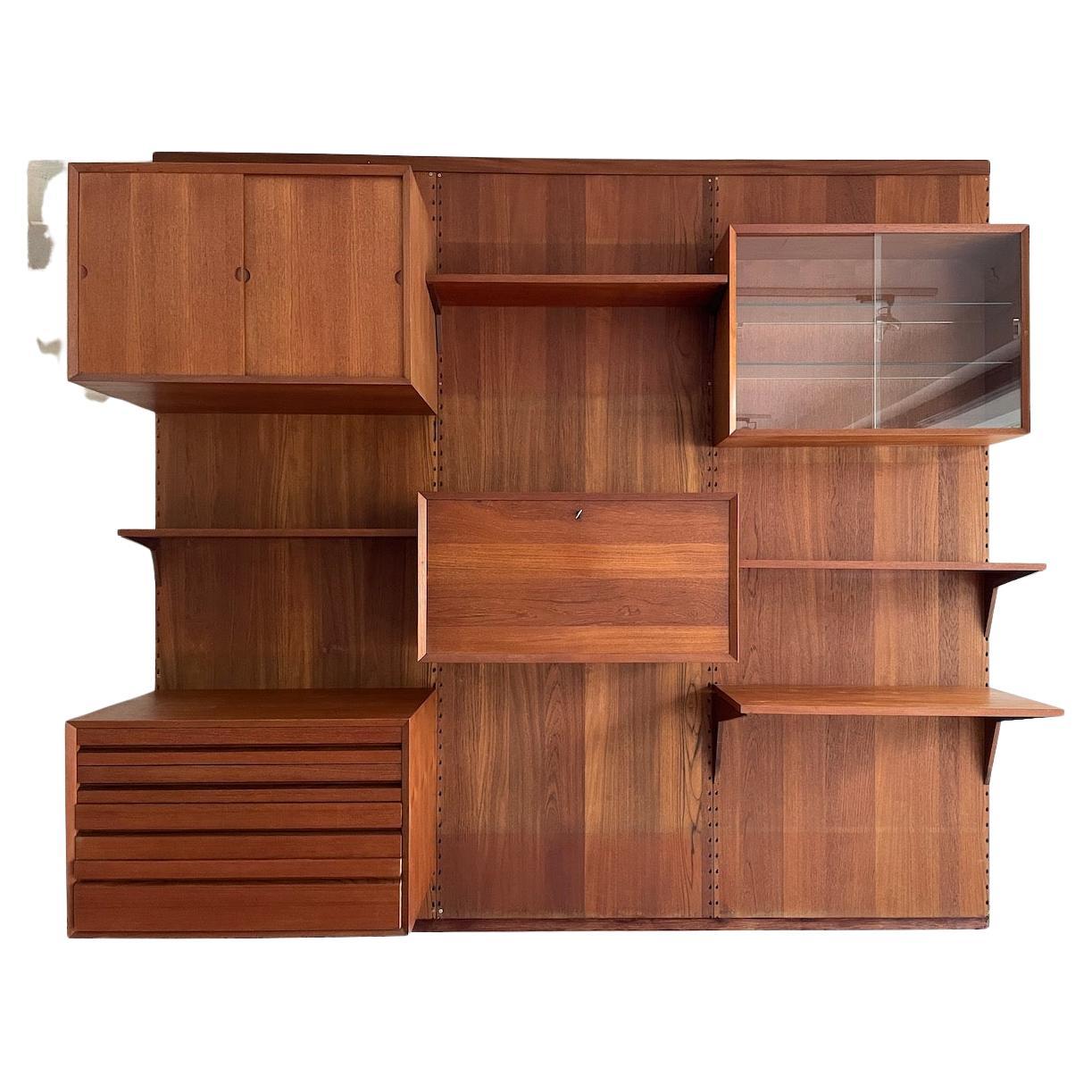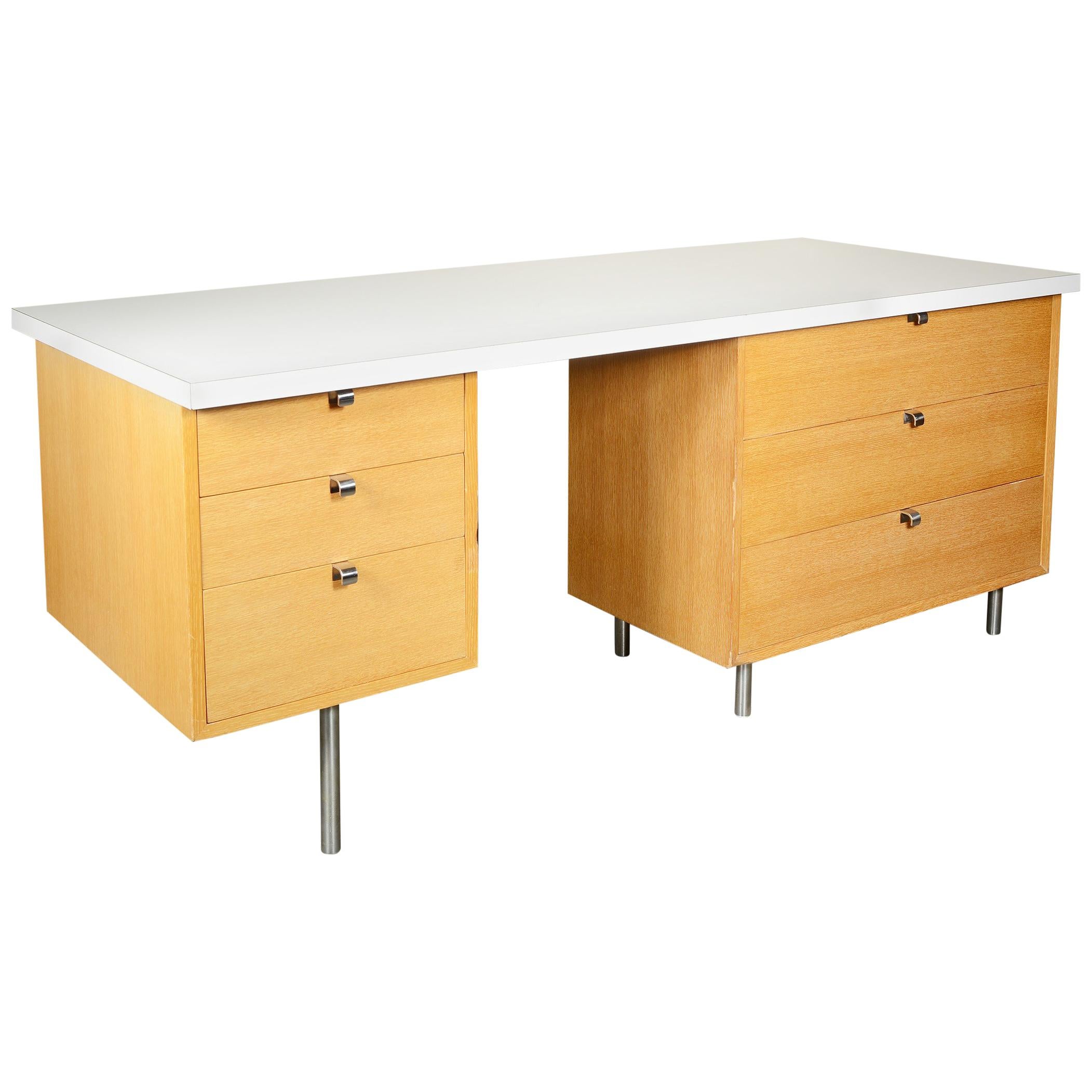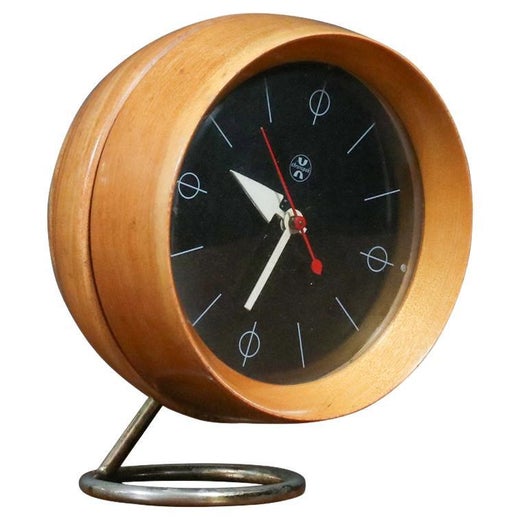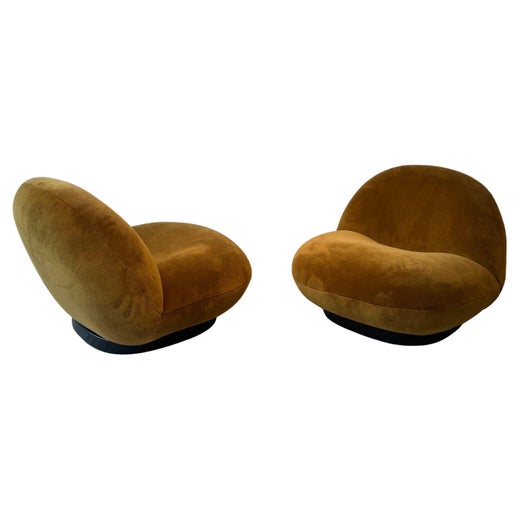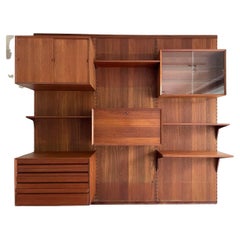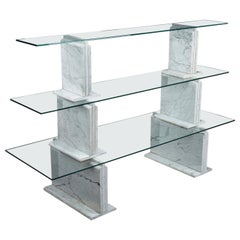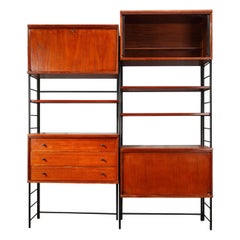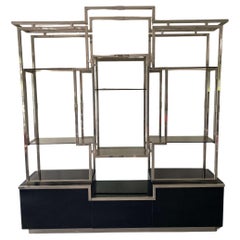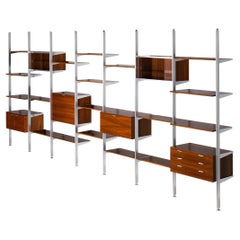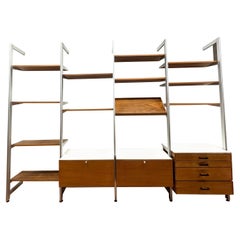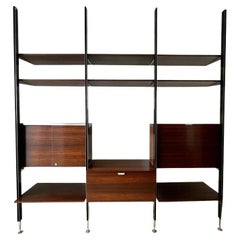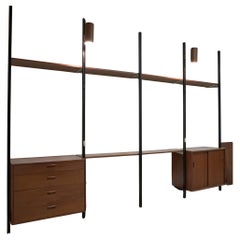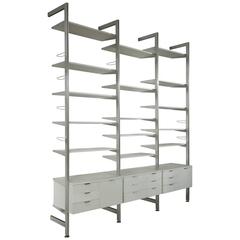
CSS Modular Wall Unit, George Nelson for Herman Miller & Mobilier International
View Similar Items
CSS Modular Wall Unit, George Nelson for Herman Miller & Mobilier International
About the Item
- Creator:
- Dimensions:Height: 111.42 in (283 cm)Width: 99.61 in (253 cm)Depth: 20.87 in (53 cm)
- Style:Mid-Century Modern (Of the Period)
- Materials and Techniques:
- Place of Origin:
- Period:
- Date of Manufacture:circa 1980
- Condition:Wear consistent with age and use.
- Seller Location:Paris, FR
- Reference Number:Seller: 21681stDibs: LU206537589583
George Nelson
Architect, designer, and writer George Nelson was a central figure in the mid-century American modernist design movement; and his thoughts influenced not only the furniture we live with, but also how we live.
Nelson came to design via journalism and literature. Upon receiving his bachelor’s degree in architecture from Yale in 1931, he won the Prix de Rome fellowship, and spent his time in Europe writing magazine articles that helped bring stateside recognition to Ludwig Mies van der Rohe, Gio Ponti, Le Corbusier and other canonical modernist architects.
In the 1940s, Nelson wrote texts that suggested such now-commonplace ideas as open-plan houses, storage walls and family rooms. D.J. De Pree, the owner of the furniture maker Herman Miller, was so impressed by Nelson that in 1944 — following the sudden death of Gilbert Rohde, who had introduced the firm to modern design in the 1930s — he invited Nelson to join the company as its design director. There Nelson’s curatorial design talents came to the fore.
To Herman Miller he brought such eminent creators as Charles and Ray Eames, Isamu Noguchi, and the textile and furniture designer Alexander Girard. Thanks to a clever contract, at the same time as he directed Herman Miller he formed a New York design company, George Nelson & Associates, that sold furniture designs to the Michigan firm. Nelson's studio also sold designs for clocks to the Howard Miller Clock Company, a manufacturer that was initially part of Herman Miller before it became an offshoot that was helmed by Howard Miller, D.J. De Pree's brother-in-law.
Nelson’s New York team of designers (who were rarely individually credited) would create such iconic pieces as the Marshmallow sofa, the Coconut chair, the Ball clock, the Bubble lamp series and the many cabinets and beds that comprise the sleek Thin-Edge line.
For dedicated collectors, as well as for interior designers who look beyond “the look,” there is a “cool factor” inherent to vintage pieces from George Nelson and others. Nelson was in on it from the start, and it’s valuable to have a piece that was there with him.
But still, as is evident from the offerings from dealers on 1stDibs, in any of the designs, in any iteration whose manufacture Nelson oversaw and encouraged, there are shining elements of lightness, elegance, sophistication — and a little bit of swagger. George Nelson felt confident in his ideas about design and didn’t mind letting the world know.
Mobilier International
Mobilier International was a prominent French furniture company that produced high-end pieces for the French market in the latter half of the 20th century. The company’s mid-century modern offerings boasted a relaxed and functional elegance. Known mainly for its leather lounge chairs and chaise lounges, Mobilier International also distributed pieces like cocktail tables and writing desks.
The story of Mobilier International began in 1955, when Michel Schulmann established Arflex France to import Italian Arflex furniture and SICAF to import Scandinavian and other Italian designs. In 1957, Shulman set up Mobilier International to bring the whole collection together under a single brand.
One of the company’s first significant imports was in 1959 with the Superleggera chair by Italian designer Gio Ponti. That same year, Mobilier International signed a contract to manufacture and sell Herman Miller furniture. The company had established itself as one of the few to offer mid-to-high-end modern furniture in France.
Throughout the 1960s, Mobilier International opened several manufacturing facilities. The company also introduced many now iconic designs, including Marco Zanuso’s Woodline armchair and the DSC 106 chair by Giancarlo Piretti. In 1968 alone, Mobilier International ordered 2,000 to 3,000 DSC 106 chairs per month to distribute in France.
In 1972, designer George Ciancimino created an interlocking aluminum furniture line for Mobilier International. The company also collaborated with Pierre Paulin on the Pacha furniture line for public buildings like hospitals and museums. Meanwhile, it continued importing international designs, like the Tizio lamp created by Richard Sapper for the Italian lighting company Artemide.
Mobilier International worked with several big names in furniture design throughout the 1980s, including Bruno Gecchelin, Pascal Mourgue and Bernard Govin.
In 1991, Mobilier International was sold to Haworth, an international office furniture manufacturer, ending the production of the company’s lounge chairs. Schulmann retired in 1994 and died in 2004, at the age of 94.
On 1stDibs, find Mobilier International seating, tables and more.
More From This Seller
View AllVintage 1960s French Scandinavian Modern Bookcases
Teak
20th Century Italian Mid-Century Modern Shelves
Carrara Marble
Vintage 1960s French Scandinavian Modern Shelves
Metal
Vintage 1970s French Bookcases
Brass
20th Century Danish Scandinavian Modern Bookcases
Teak
Vintage 1960s Danish Scandinavian Modern Bookcases
Rosewood
You May Also Like
Vintage 1950s American Mid-Century Modern Bookcases
Aluminum
20th Century American Shelves
Metal
Mid-20th Century French Mid-Century Modern Shelves
Aluminum, Steel
Vintage 1970s American Mid-Century Modern Shelves and Wall Cabinets
Metal
Vintage 1950s American Mid-Century Modern Bookcases
Glass, Walnut
Vintage 1960s American Mid-Century Modern Bookcases
Aluminum
Recently Viewed
View AllRead More
A Guide to Herman Miller’s Most Iconic Furniture
The prolific manufacturer has partnered with many of the world’s top designers since opening its doors in 1923. Here are some of the company’s greatest hits, which helped transform the American home and office.
Kule and Forsyth Give Iconic Furniture a Bold Makeover with Stripes
Maggie and Anne Genovese, of Forsyth, teamed up with fashion designer Nikki Kule to reimagine some classic pieces.
